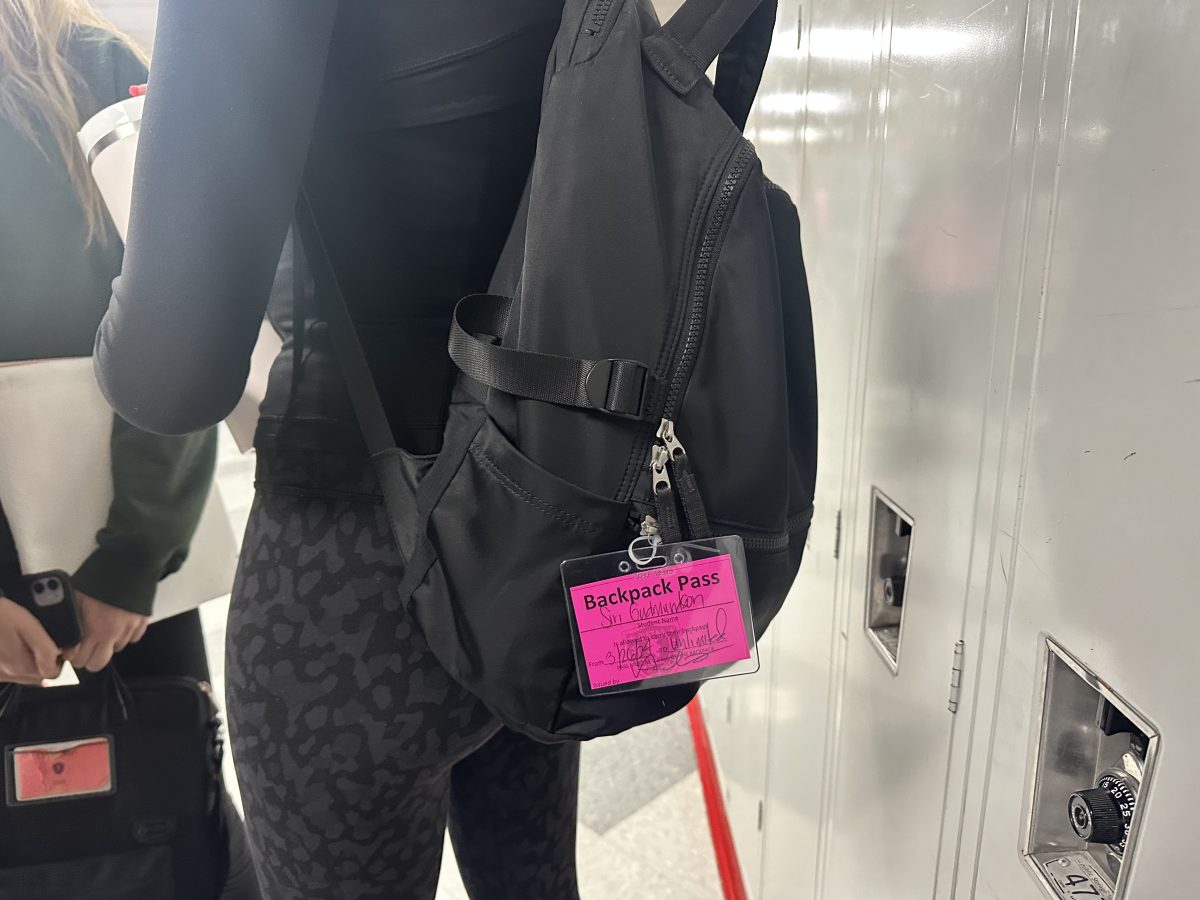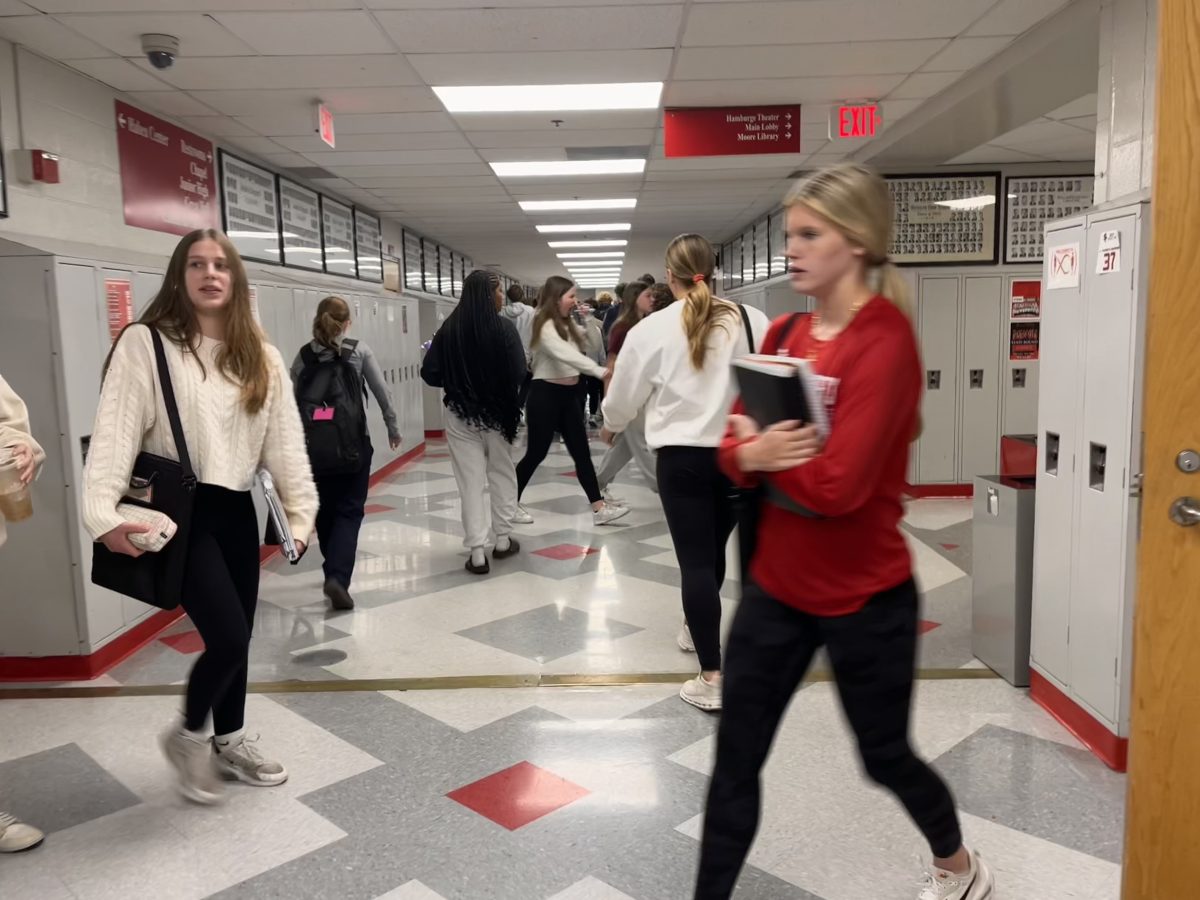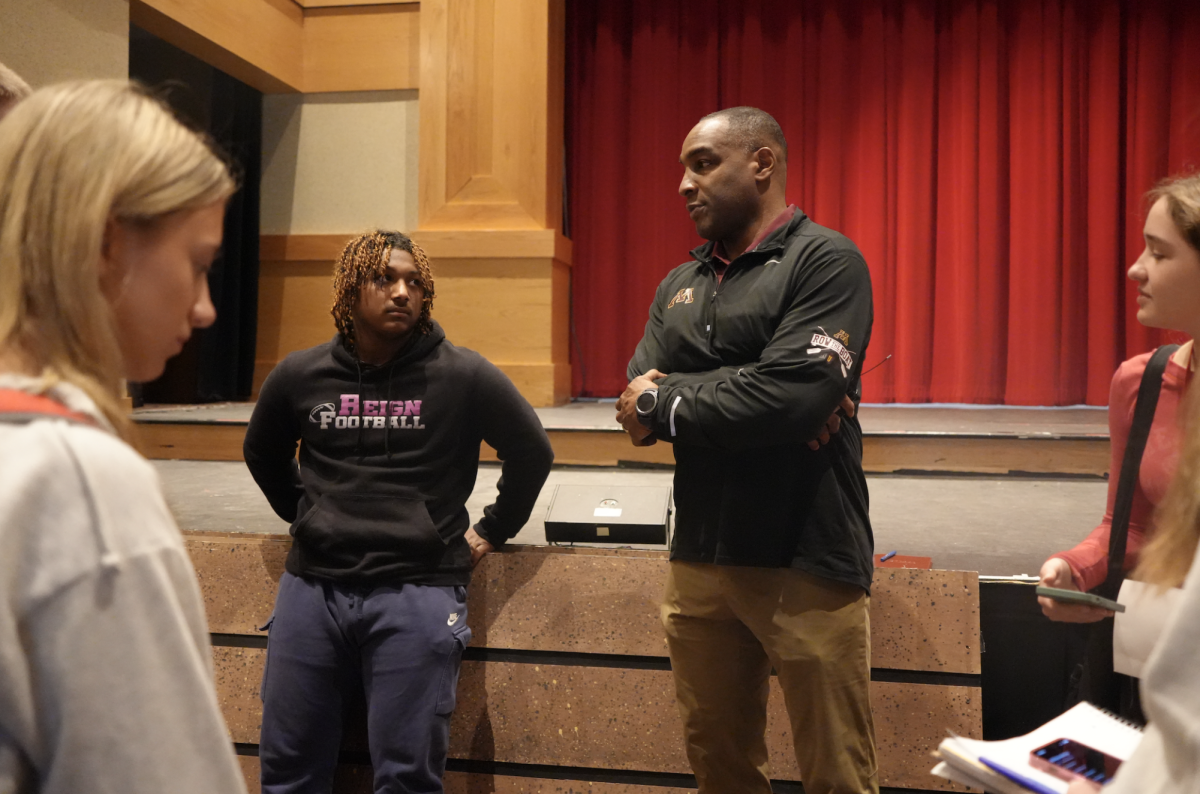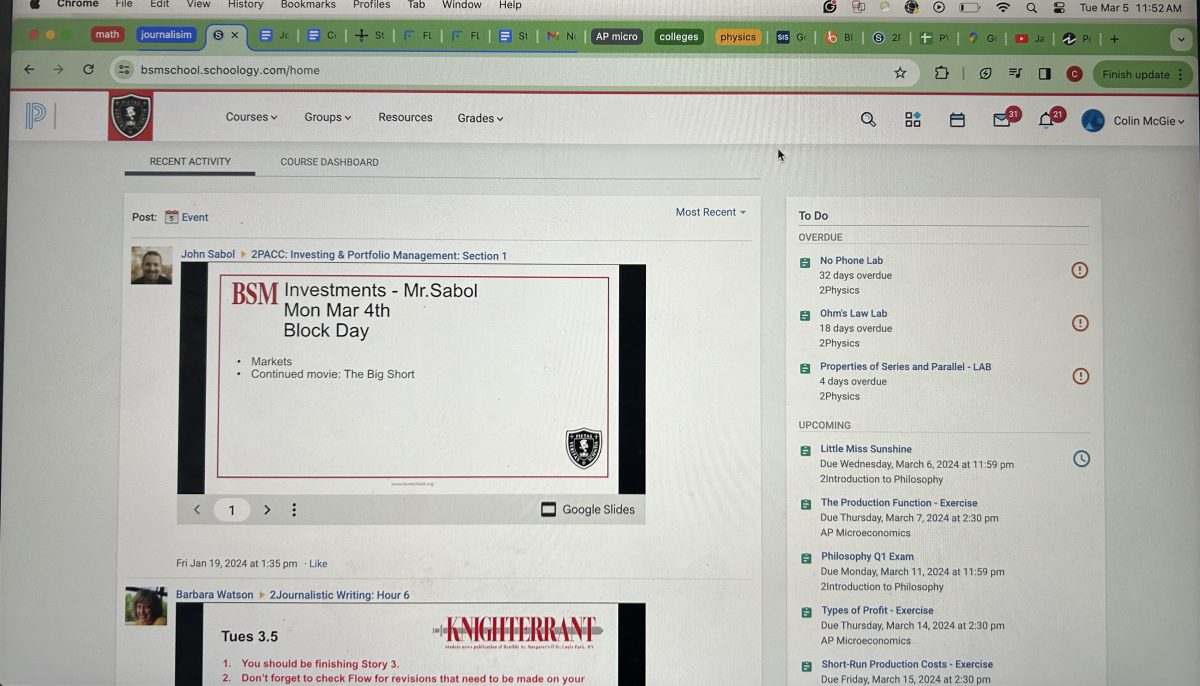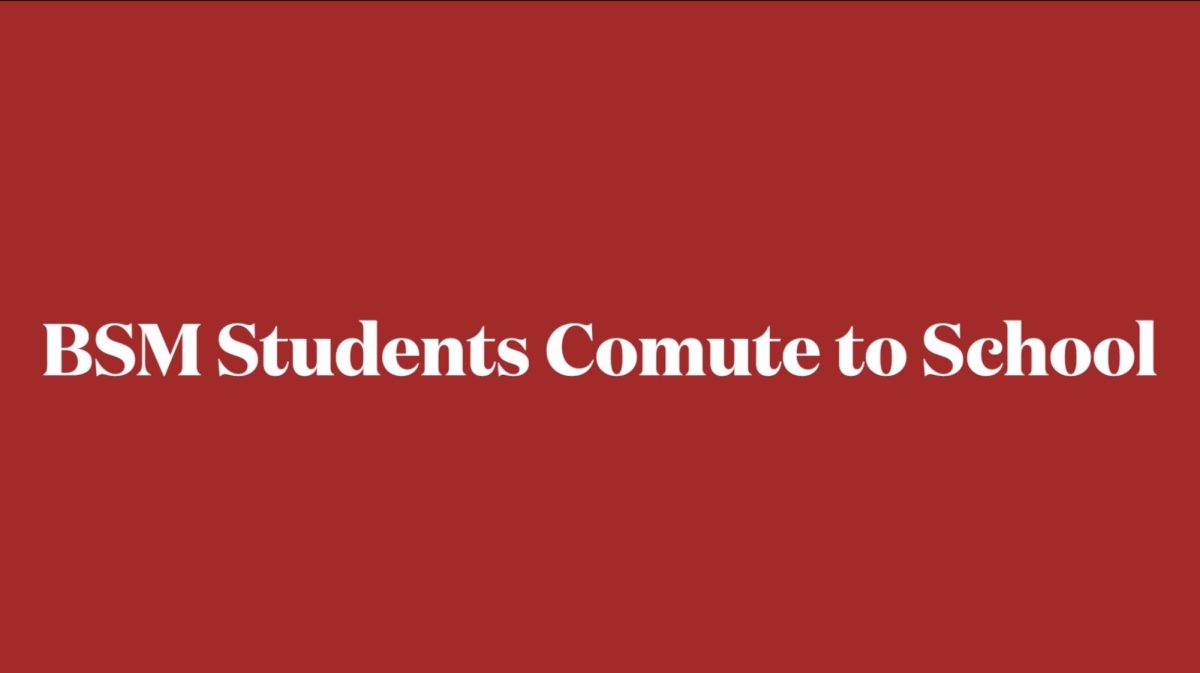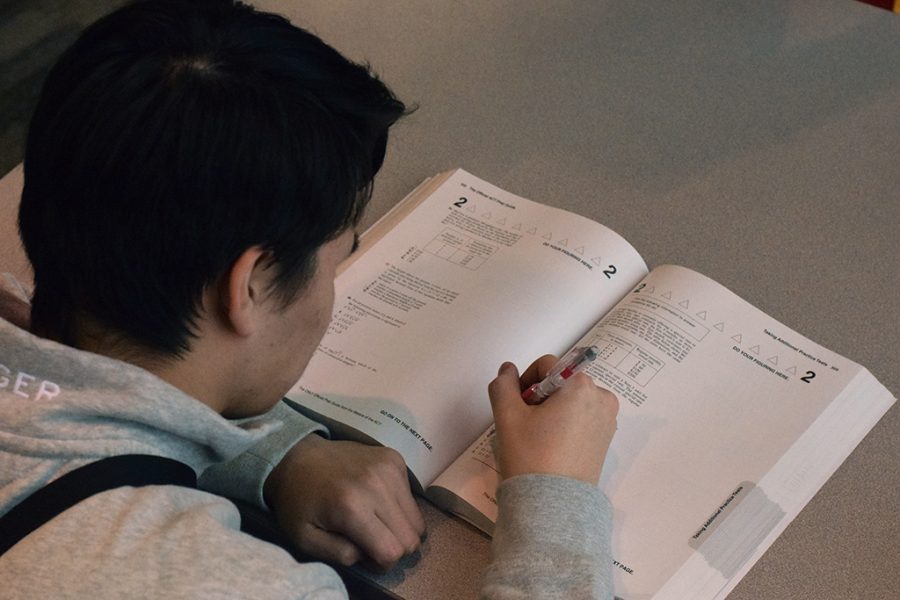BSM’s offers new ACT prep class
Juniors in the new ACT prep class study from workbooks to prepare for the ACT.
The ACT, a standardized test taken by millions of high schoolers every year, uses material learned by students throughout high school to show where they stack up against other students for competitive universities. It plays a large roll in college admissions decisions for most schools. Most of these test-taking high schoolers undergo some form of preparation for the test, which can add unnecessary fees to an already expensive college admissions process. Although the test is required by most colleges across the country, many high schools offer no (free) preparation help to students. However, starting this year, BSM juniors are required to take an ACT prep class during their BSM Hour once a week.
BSM juniors attend the class during their free hour on block days. Practice books are given out to each student, with book homework due every class. Most days start off with a roughly 30-minute lecture on how to take the test, followed by 30 minutes to complete practice problems. “The juniors take 11 classes, which lead up to the December ACT,” Principal Dr. Susan Skinner said.
The juniors take 11 classes, which lead up to the December ACT
— Dr. Susan Skinner
Juniors like the fact that they are getting advice and help with the ACT in school, while many despise the fact that they have to spend what they feel should be their free hour block in a classroom.
The class is taught in a very broad and general manner that doesn’t apply to the specific concerns or needs that some students have. Junior Walker Niebergall doesn’t have the highest opinion of the class. “I think the idea of individualism is very important when considering the ACT. Everybody takes the test differently, so learning how to take the test as a group doesn’t really benefit anyone. I still like the idea of the prep class, and think it should be offered at more schools, but the school needs to change the class so that it appeals more to people’s personal needs,” Niebergall said.
Some students are skeptical if the class will actually help their test scores. “I’m not sure if the class will help raise my score. It might help slightly in English or math, but overall I don’t think it will help much,” junior Frankie Lynch said.
Every BSM teacher is required to sit in on one of the classes throughout the year. The teachers’ opinions on the class were very similar to those of the students. English teacher Ms. Anna Overbo said that she liked the idea and accessibility of the class, but she thought the format of the class could be improved. “It struck me that the way the class was run wasn’t the most effective or efficient way to get the information across, and students weren’t able to absorb the information well,” Overbo said.
Although the class has some flaws, it is a new program that is still very much in the trial period. Current class sizes can be up to 25 students, however, the school hopes to lower the number of students per class. “We would like to get the class sizes down to 12-16 students,” Skinner said.
After the 11 class periods are over, the students will be asked about their personal experiences in the class, and the school will likely use this input to revise the class for the future.


